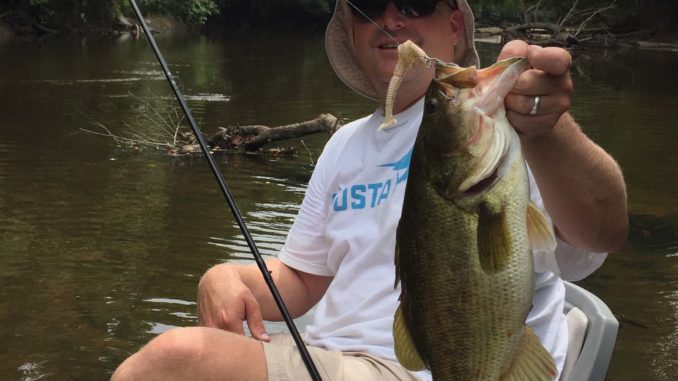
Shallow wooden cover can solve tough bass
Fishing shallow wood is about as consistent a pattern as you can find in September. Notoriously a tough month because fish are spread out, September can really test your angling skills.
There are several types of shallow wood, and figuring out how the fish are positioning on them and which type they are on the best is the key to catching fish. Stumps, laydowns, standing timber, shallow brush or limbs and cypress or water tupelo trees — all are great cover for early fall bass.
First, stumps are probably the most consistent of all shallow wood. Often, stumps line the edge of an old creek channel, so you have two things going on there: the drop of the old channel and the stump and root system. Fish use the channel to travel and for deep-water safety and the stump to hide and ambush prey.
I would guess that most of the time, bass will be looking out towards the deeper water, so fishing parallel to the old creek is usually the best presentation for moving baits such as crankbaits and spinnerbaits. If you slow down and fish with a worm or a jig, the initial fall is the most important, so you need to be aware of how the bites are coming and what direction the fish is moving when it bites. If you get really hard bites, the bass are probably pinning it against the stump and will have to turn to go to deeper water with your lure. If you are getting lighter bites, they are probably biting it swimming towards you. This tells you where you should cast. If you are getting hard bites, you should probably cast beside the stump and pull into deeper water. If the bites are soft, casting to the face of the stump is your better bet.
Water depth is also key here. The shallower the stump, the more likely the bass is to be on the deeper side, but if you have some depth on it, even just a couple of feet, they could be on the shallow side. This can change with the time of day and activity level of the bass, so pay attention to how you are getting bites and then duplicate it or adjust to get even more.
Laydowns are random, and one could fall anywhere at anytime, so fishing them is usually random as well. Sometimes, the really overlooked ones are the best, like one on a shallow flat away from the channel. Most anglers don’t bother, so a bass or multiple bass can get really comfortable living there and be quite easy to catch. But like I said, those can be really random.
A good way to pattern logs is by size and/or location. If you are fishing Falls of the Neuse Lake, which has lots of laydowns, pay attention to how big the base is and where it has fallen. Sometimes they like logs in mid-day adjacent to points where they may have been feeding in the morning. The options and patterning are literally endless, but by simply paying attention, you can put together a better day.
Shallow brush is one thing I keep an eye on. Just a tiny, single limb barely sticking out of the water can be a real honey hole, revealing a brush pile or simply a big limb. These are the types of places that can churn out a nice fish or two every day, because most fishermen do not notice them.
Standing timber is everywhere in some lakes as well, and it can be overwhelming. Pay attention to where the channel is and not so much the trees, unless the timber is not related to a channel. If there is a channel going through the trees bass will be near the channel 90 percent of the time. The hardest thing about standing trees is figuring out if bass are suspended and where they are suspended. Pay attention to where you get bites in the water column and start duplicating.
Then there are the most confusing of all — the trees that live in the water: cypress and water tupelo among others. What I’ve noticed over the years is the bigger trees grow on the edge of the channel and tend to attract the most fish. There are always those weird days when the fish want to be on the dead trees or on the shallowest trees, but a good place to start is on the biggest trees.
I hope all this helps you catch more fish and gets your mind thinking about where those darn fish are, because they can sure be tough in September.



Be the first to comment